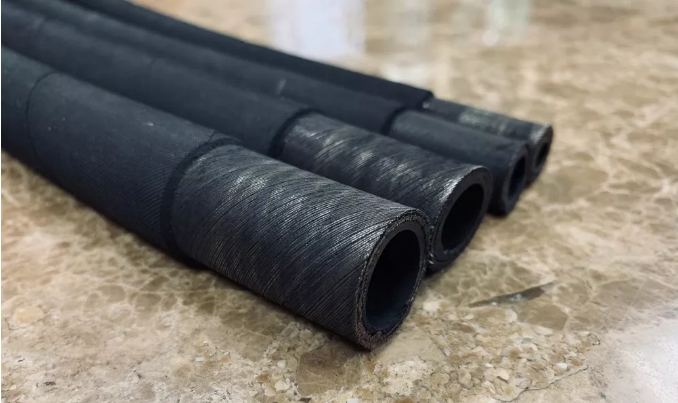Laizhou Qiyuan Plastic Products Co., Ltd. arranges daily high pressure Sandblasting hose To understand the following:
1. Failure cause analysis of outer rubber layer:
(1) Cracks appear on the surface of sandblasting hose: The main reason for the cracks on the hose surface is that the hose is bent in cold environment.
(2) Sandblasting Bubbles appear on the outer surface of the hose: The reason for bubbling on the outer surface of the hose is that the production quality of the hose is unqualified, or the hose is used improperly during work.
(3) Sandblasting The hose is not broken but has a large amount of oil leakage: The hose leaked a lot of oil, but no crack was found. The reason was that the inner rubber was eroded and scratched when the hose passed through the high-pressure liquid flow, until a large area of steel wire layer leaked, leading to a large amount of oil leakage.
(4) Sandblasting The outer rubber layer of the hose has seriously deteriorated, and the surface has micro cracks, which is the performance of natural aging of the hose. Due to aging and deterioration, the outer layer is constantly oxidized to cover its surface with a layer of ozone, which thickens with time. As long as the hose is slightly bent in use, tiny cracks will occur. In this case, replace the hose.

2. Failure cause analysis of inner rubber layer:
(1) Sandblasting The rubber layer inside the hose is hard and cracked: the main reason is that the hose is flexible and plastic due to the addition of plasticizer in the rubber products. However, if the hose is overheated, the plasticizer will overflow.
(2) Sandblasting The rubber layer inside the hose is seriously deteriorated and swollen: the rubber layer inside the hose is seriously deteriorated. The reason for the obvious expansion is that the rubber material inside the hose is incompatible with the oil used in the hydraulic system, and the hose is deteriorated due to chemical action.
3. Fault analysis of reinforcement layer:
(1) Sandblasting The hose is broken, and the braided steel wire near the break is rusted Sandblasting The hose was broken, and the outer rubber layer was stripped off for inspection. It was found that the braided steel wire near the break was rusty. This is mainly due to the effect of damp or corrosive substances on this layer, which weakens the strength of the rubber hose and causes it to break under high pressure.
(2) Sandblasting The reinforcing layer of the hose is not rusted, but the reinforcing layer is broken irregularly.
Sandblasting The hose is broken. No rust is found on the reinforcing layer after peeling off the outer rubber layer, but irregular broken wires are found in the length direction of the reinforcing layer, which is mainly caused by Sandblasting The rubber hose is subject to high-frequency impact.



